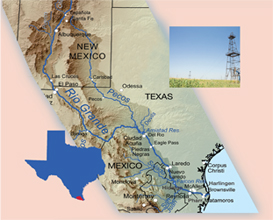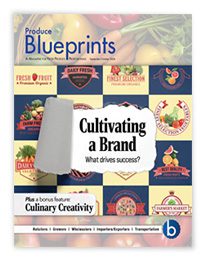The Trouble with Droughts, Labor, and Congress
While the future is promising, the Valley has a slate of issues to contend with in the present. Among the most pressing of these challenges is water—or the lack of it. Since 2010, much of Texas has been in various stages of drought, from moderate to historic. In 2012, the Lower Rio Grande Valley saw just nine inches of rain; the average annual rainfall normally runs to more than 21 inches. But times aren’t normal, and neither is the weather. As TIPA’s Erickson wryly observes, “To say that the Valley is challenged with water is an understatement.”
FRESH FORUM
What innovations do you think will have a profound impact on the industry?Armando Flores, Ace Customs Broker, Inc.
I think it’s probably how companies are working to break new ground. So avocados are avocados, and berries are berries, but people are also trying to come up with new varieties of produce. Whether this means creating a hybrid or not, they want to make it healthier, cleaner, and more presentable.Chad Szutz, A-W Produce Company
Technology: it’s already happening in other industries and now it is slowly moving into agriculture… Look at global positioning systems in tractors, for instance, and there are new programs coming out all the time. New technology is going to streamline our sector even more.Art Salinas, Bonanza 2001
If anything is having an impact, it’s the constantly changing level of food safety. There are so many hoops we have to jump through. Don’t get me wrong, the hoops are good—but they cost us a lot of money. The problem is we have to add it into our costs, but the customer doesn’t want to pay—they want it “bueno, bonito, barato” (good, pretty, inexpensive).Jorge Vázquez, Latin Specialties, Inc.
Advances in automation will hopefully bring some relief to the shortage of labor. In addition, the use of genetically-modified crops and advances in biotechnology will hopefully deal with threats like water shortages and plant diseases, such as citrus greening.Richard Ruiz, Ruiz Sales
As younger generations buy more and more produce, they demand more product traceability, food safety, and supplemental information. Generation Y is the first generation to grow up surrounded by technology, and this has led to constant access to information…The information on the Internet, however, isn’t always reliable. Rather than risk the possibility that people will learn the wrong things about produce, we should be providing the information ourselves.
Yasmani García, Sweet Seasons LLC
We in the industry need a way to get our loads across the border more quickly. Our company brings in a lot of papaya, and for every load that crosses the border, it takes seven to ten days for the FDA to release [loads] because they test papaya for Salmonella. For a product like papaya, that’s too long—it needs to get through quickly to keep it as fresh as possible.Bret Erickson, Texas International Produce Association
Biogenetic developments; there’s probably going to be no other way to save our citrus industry. A lot of people are anti-GMO, but these technologies could potentially save the U.S. citrus industry.He points to ongoing water resource issues with Mexico—the watershed is on both sides of the Rio Grande River—as well as urbanization and overdevelopment, noting that these factors have also contributed to the water shortage and will continue to do so. And although the drought eased substantially in the winter and autumn of 2014, Erickson isn’t celebrating just yet.
He points to ongoing water resource issues with Mexico—the watershed is on both sides of the Rio Grande River—as well as urbanization and overdevelopment, noting that these factors have also contributed to the water shortage and will continue to do so. And although the drought eased substantially in the winter and autumn of 2014, Erickson isn’t celebrating just yet.



